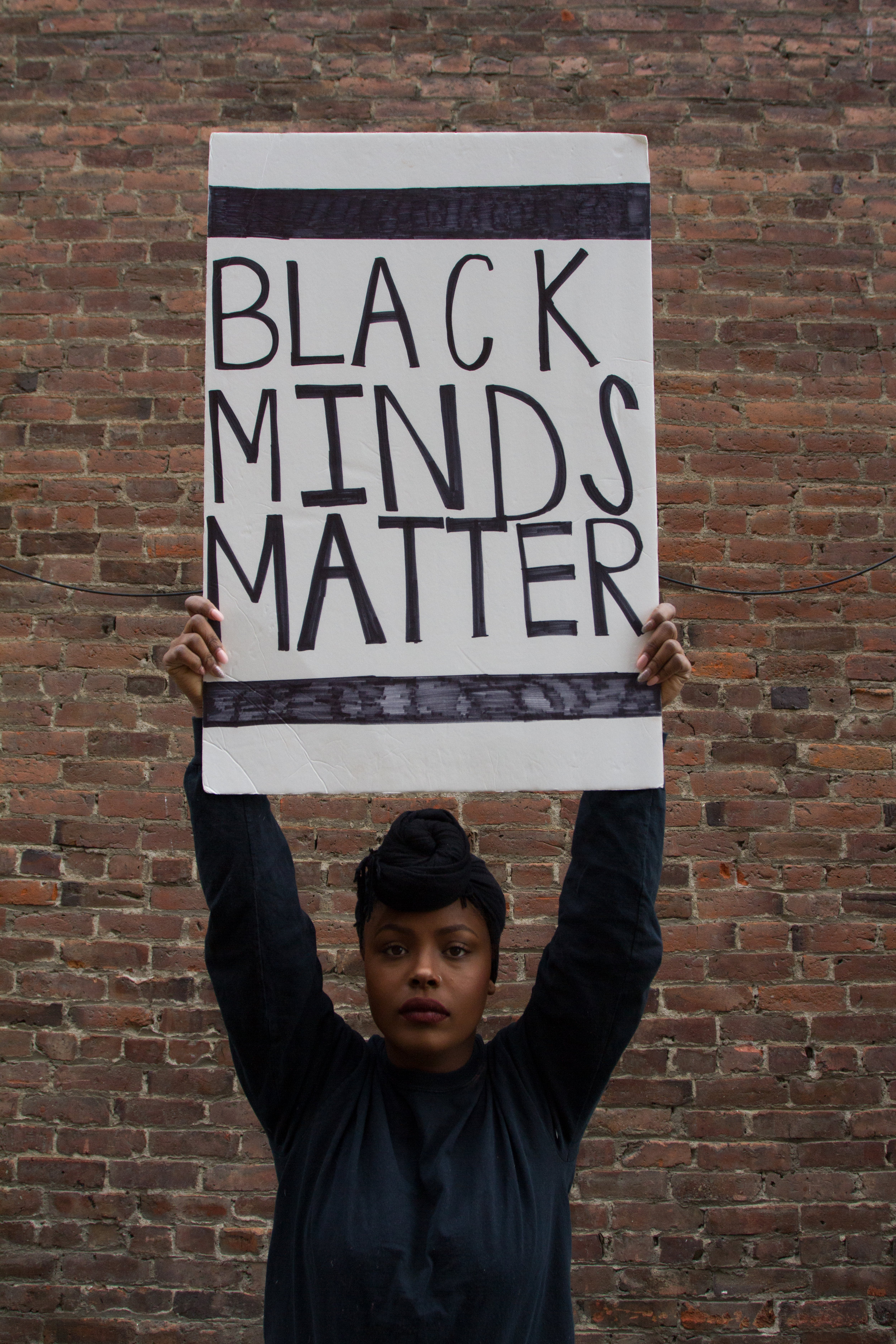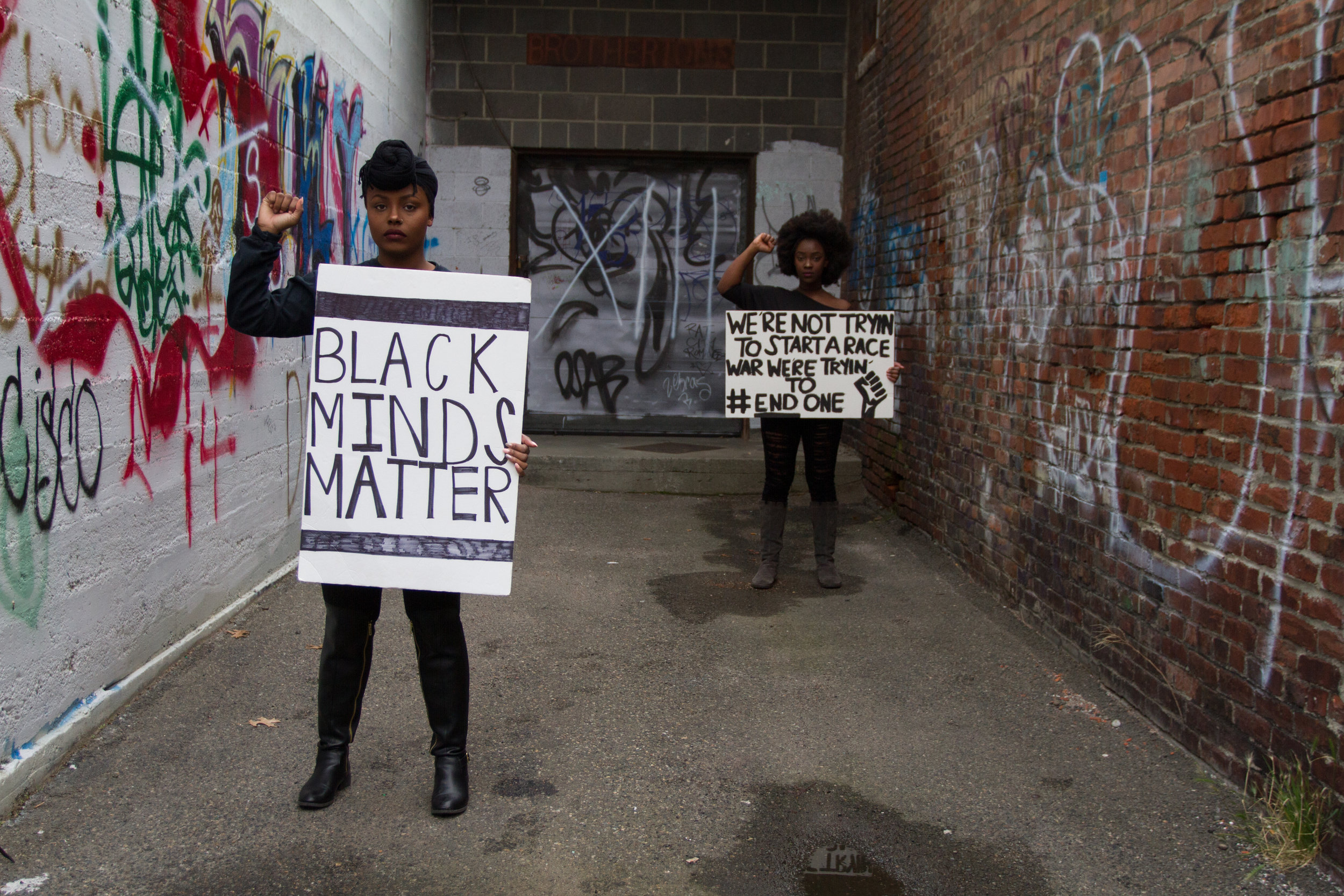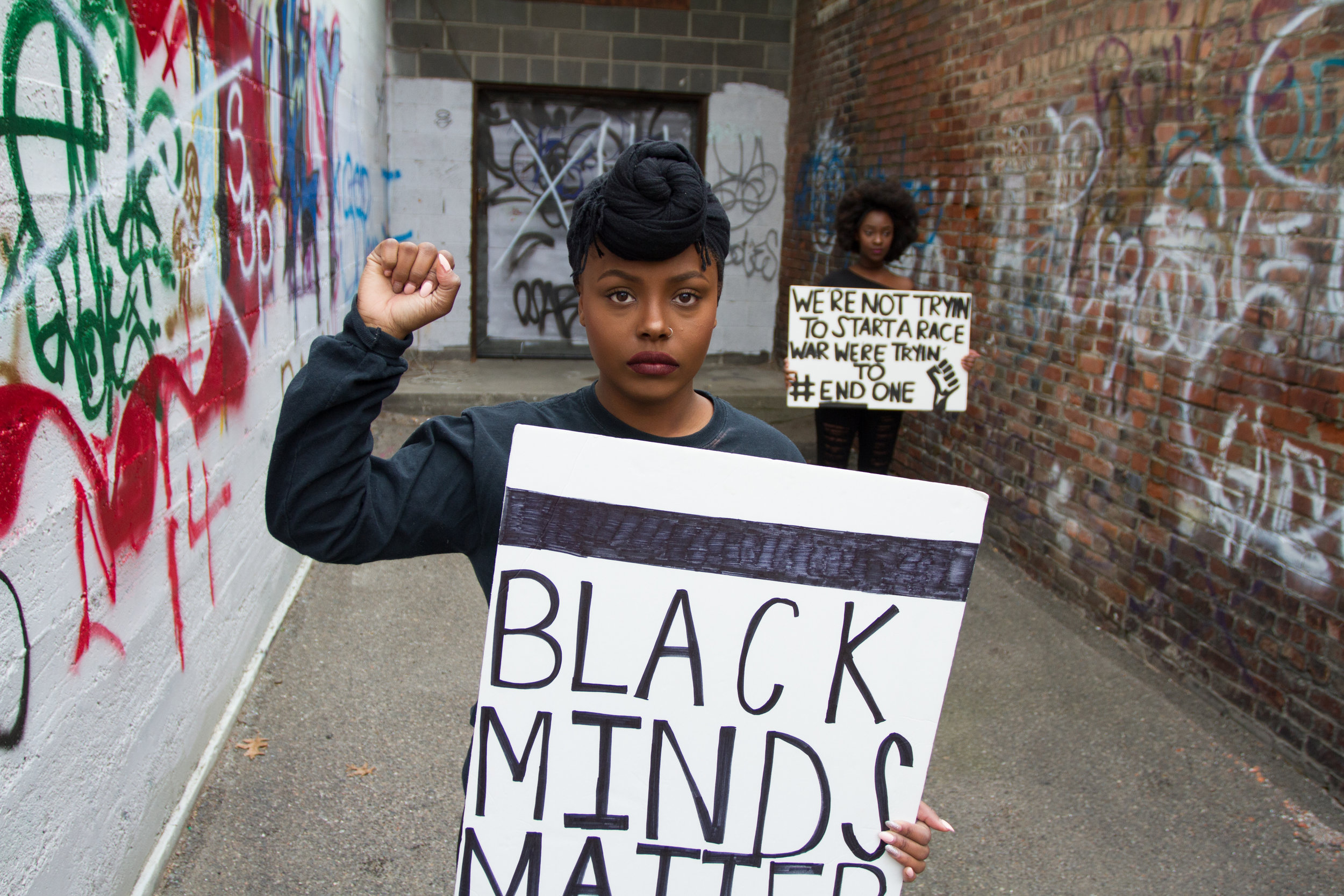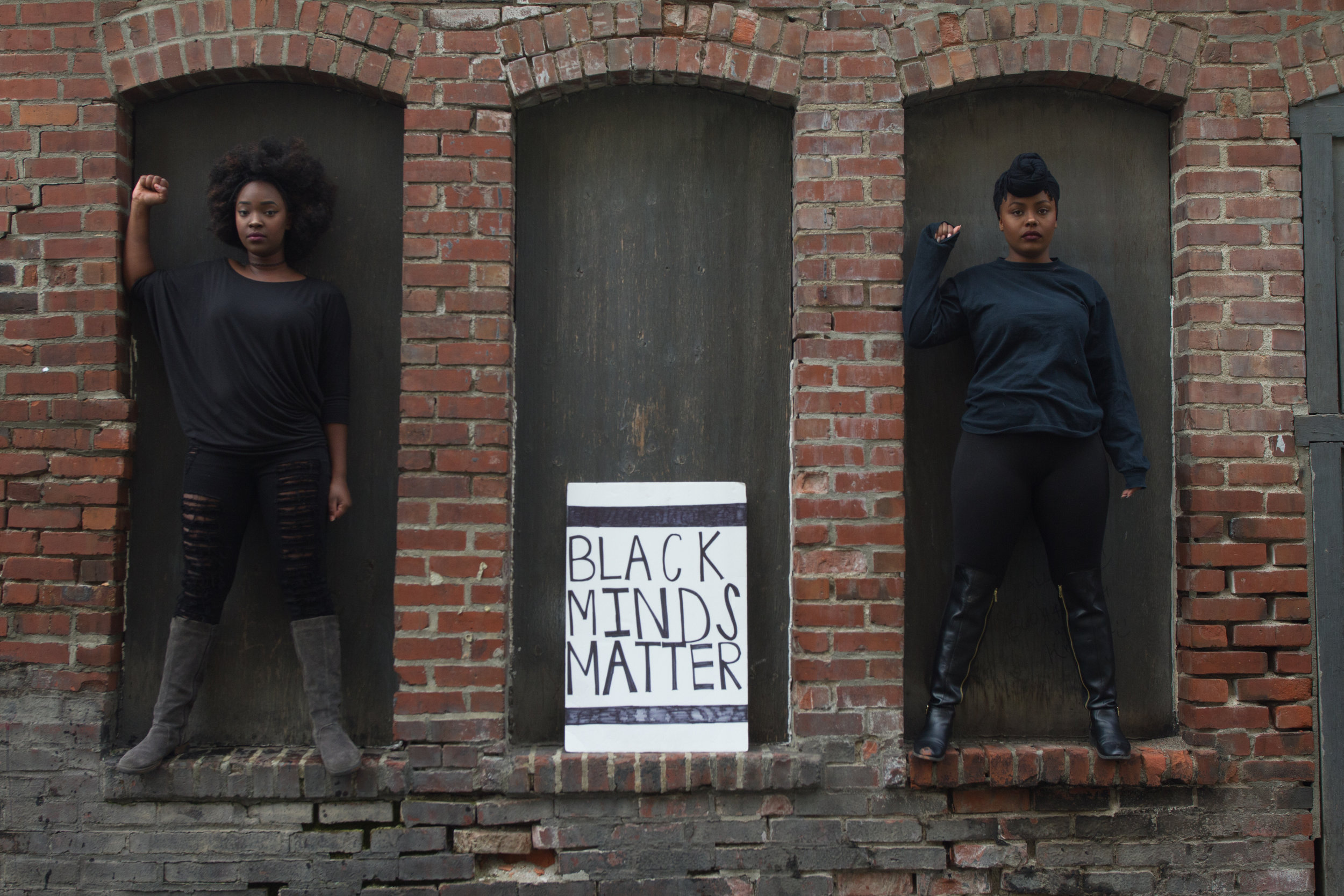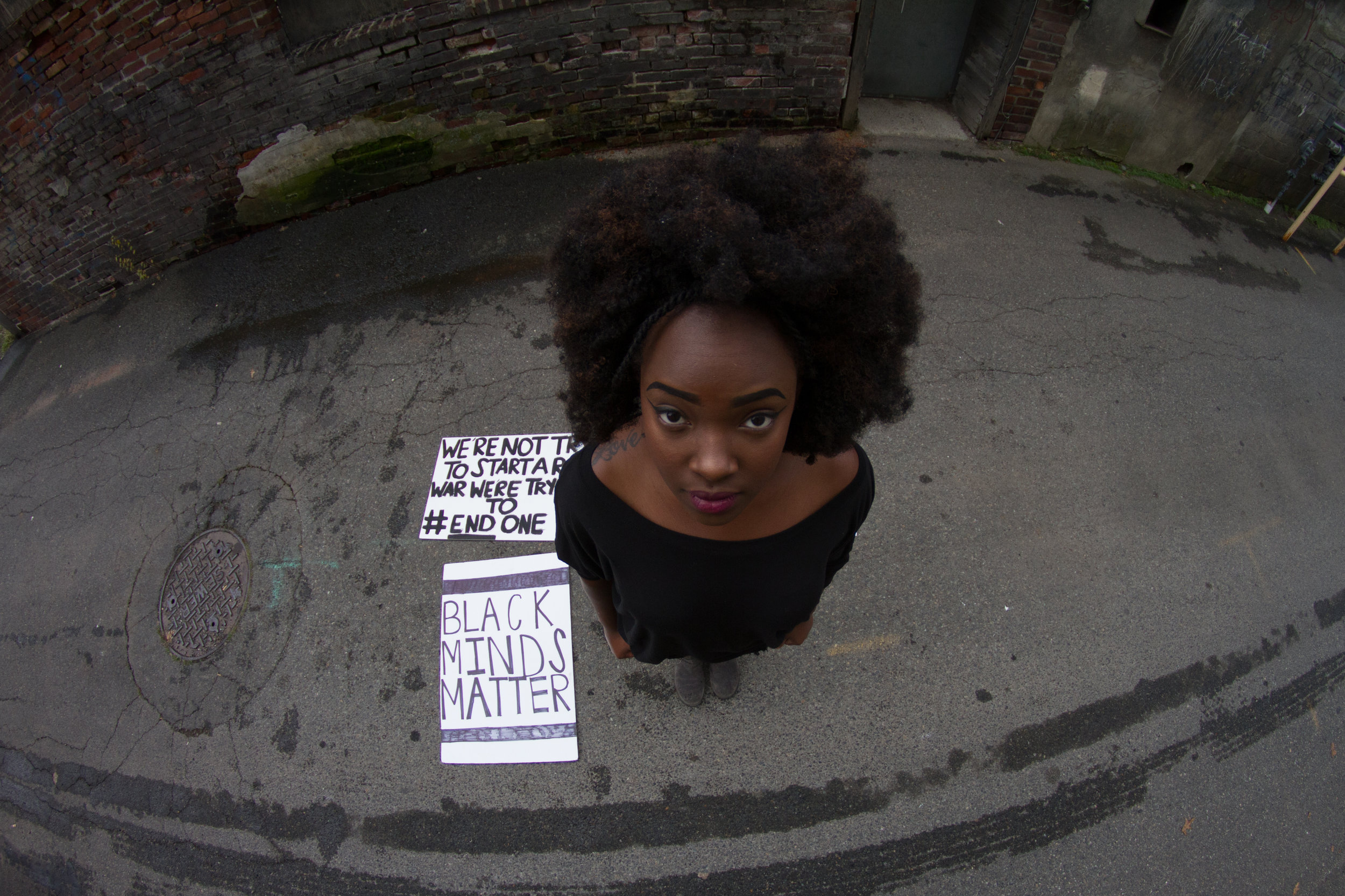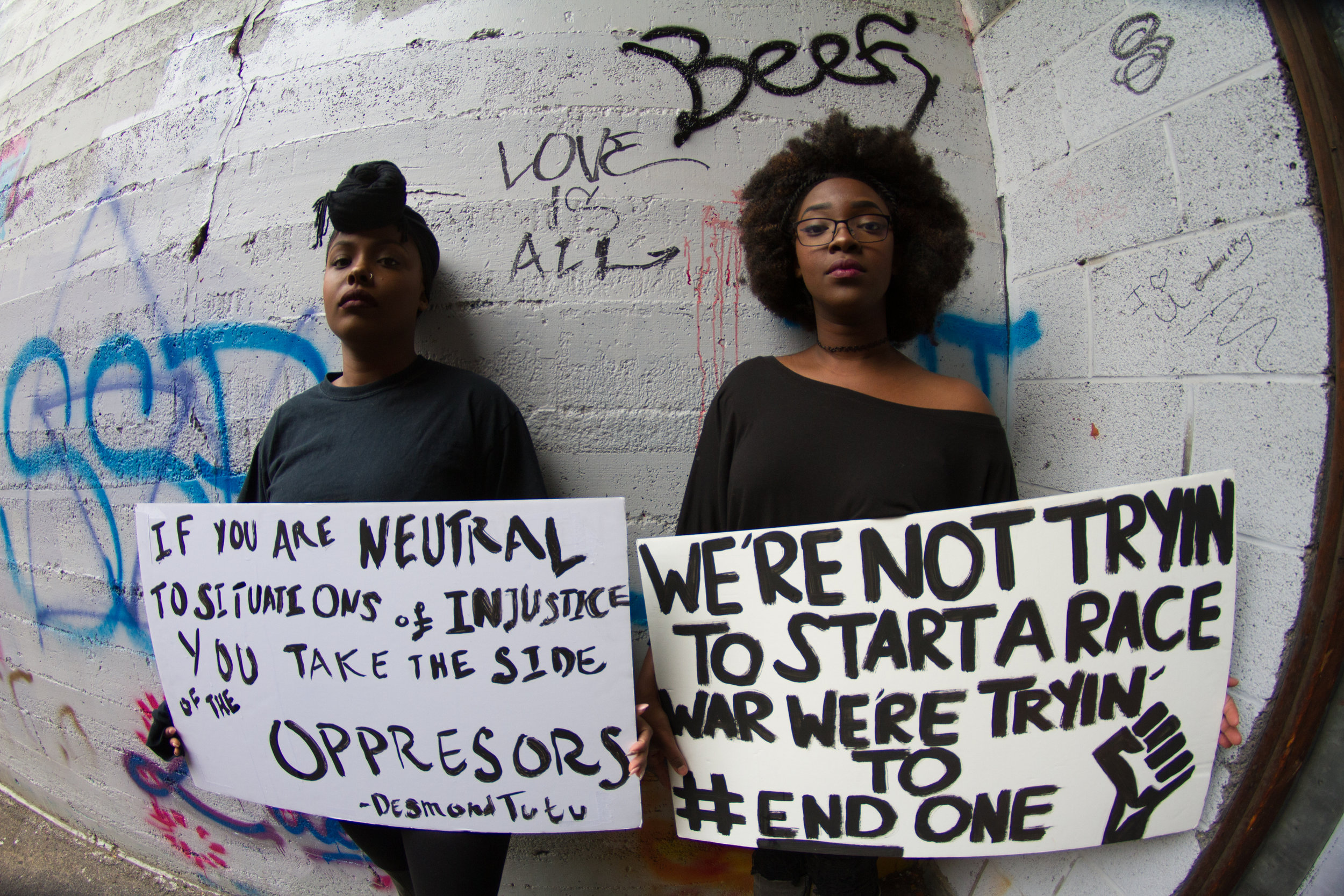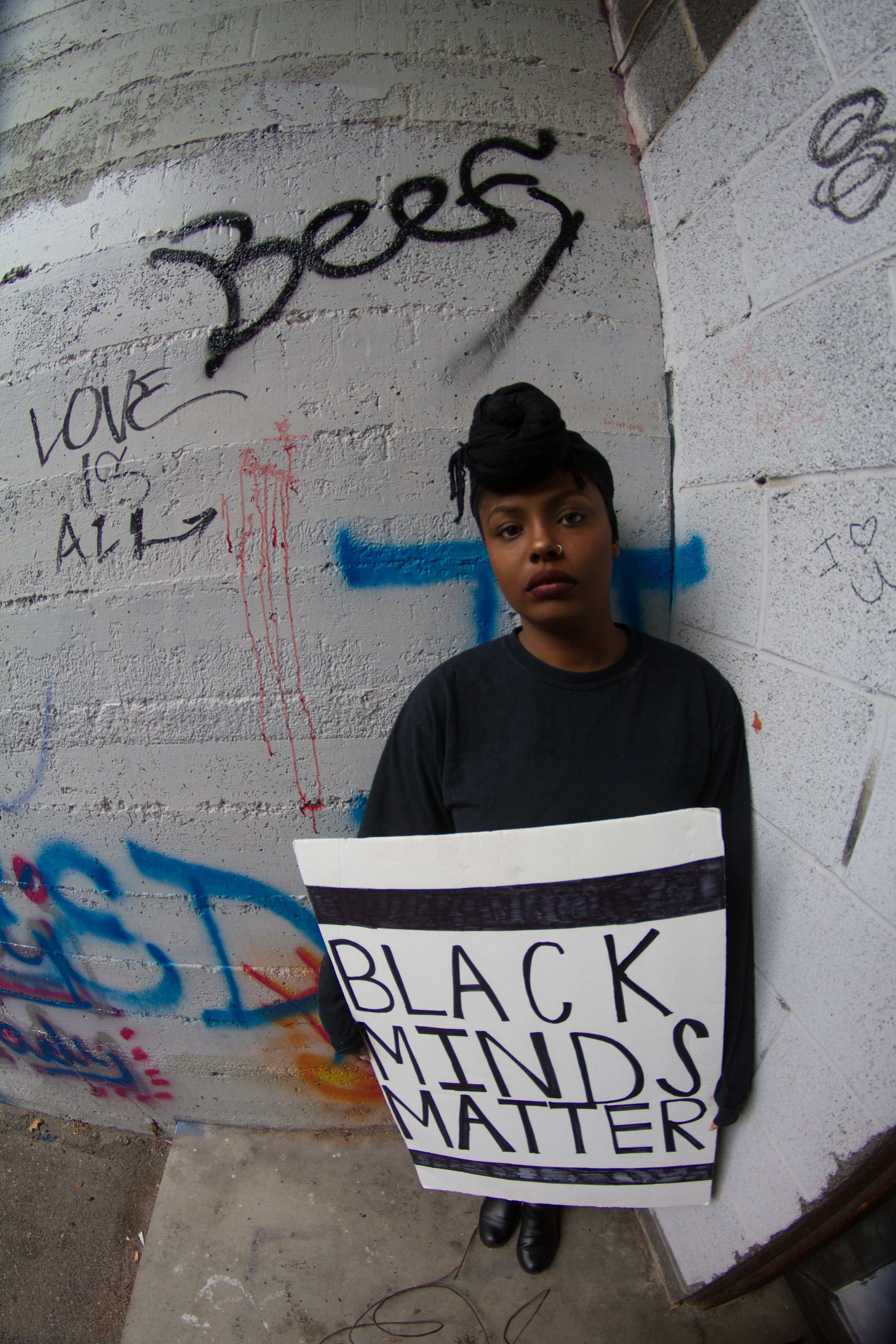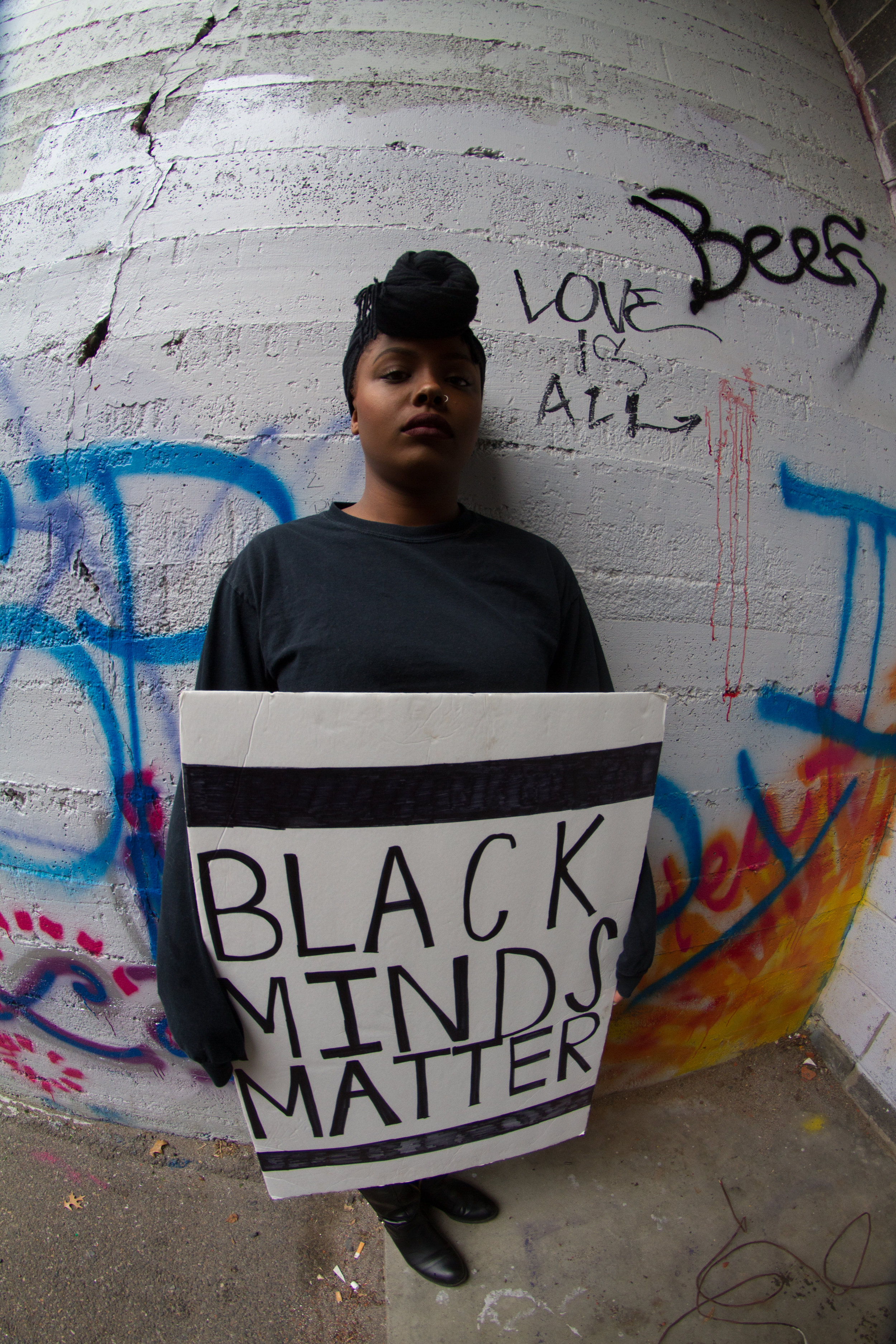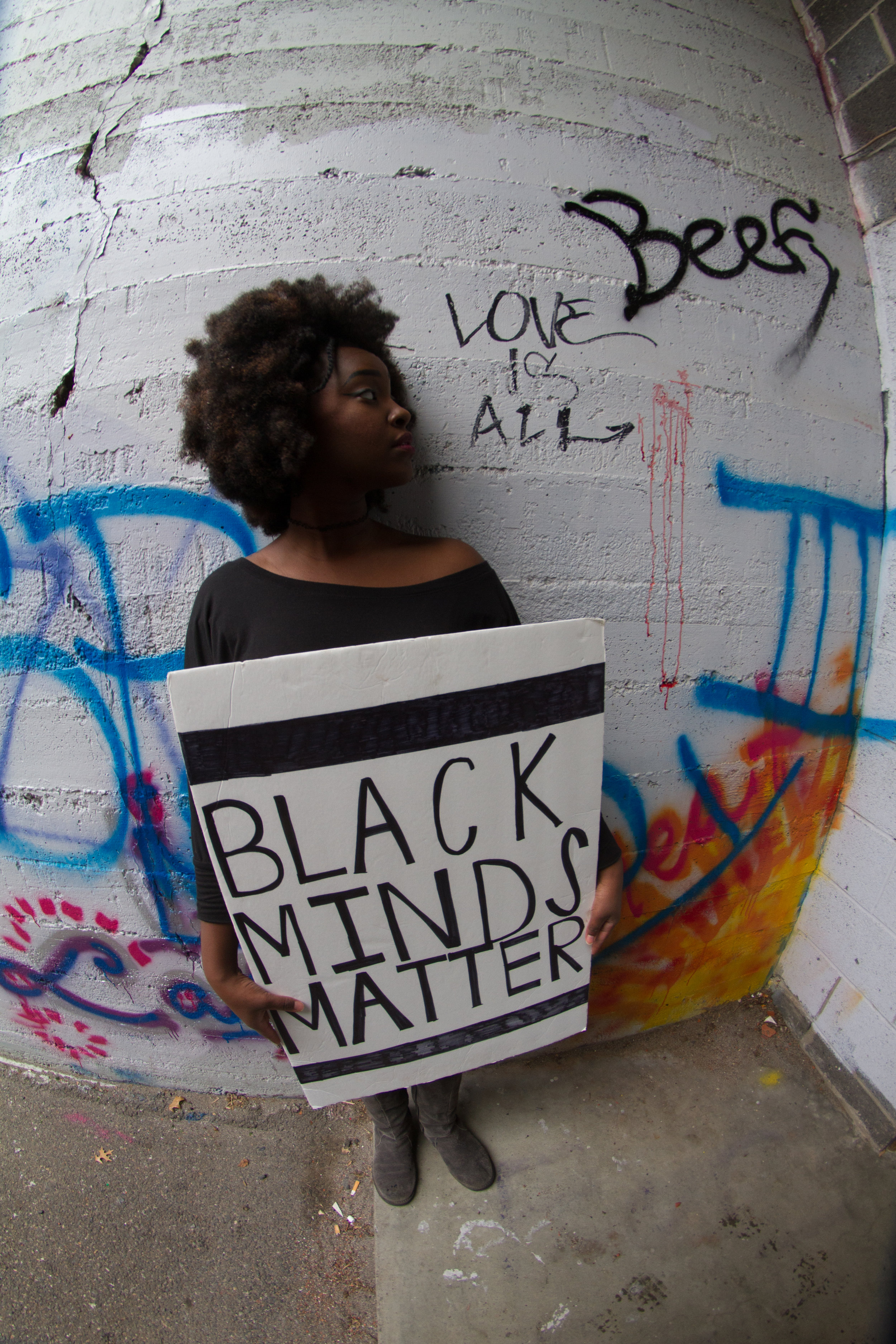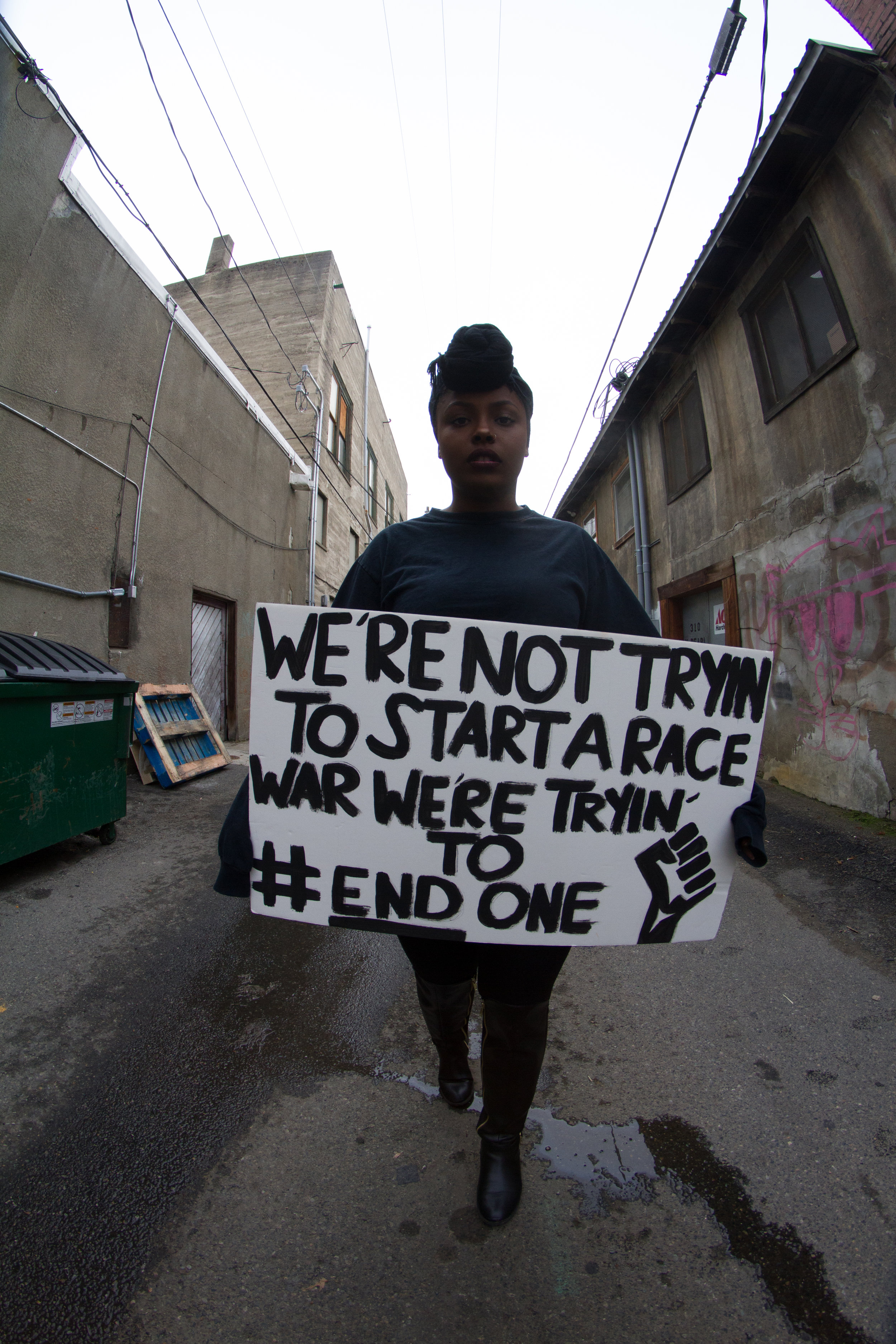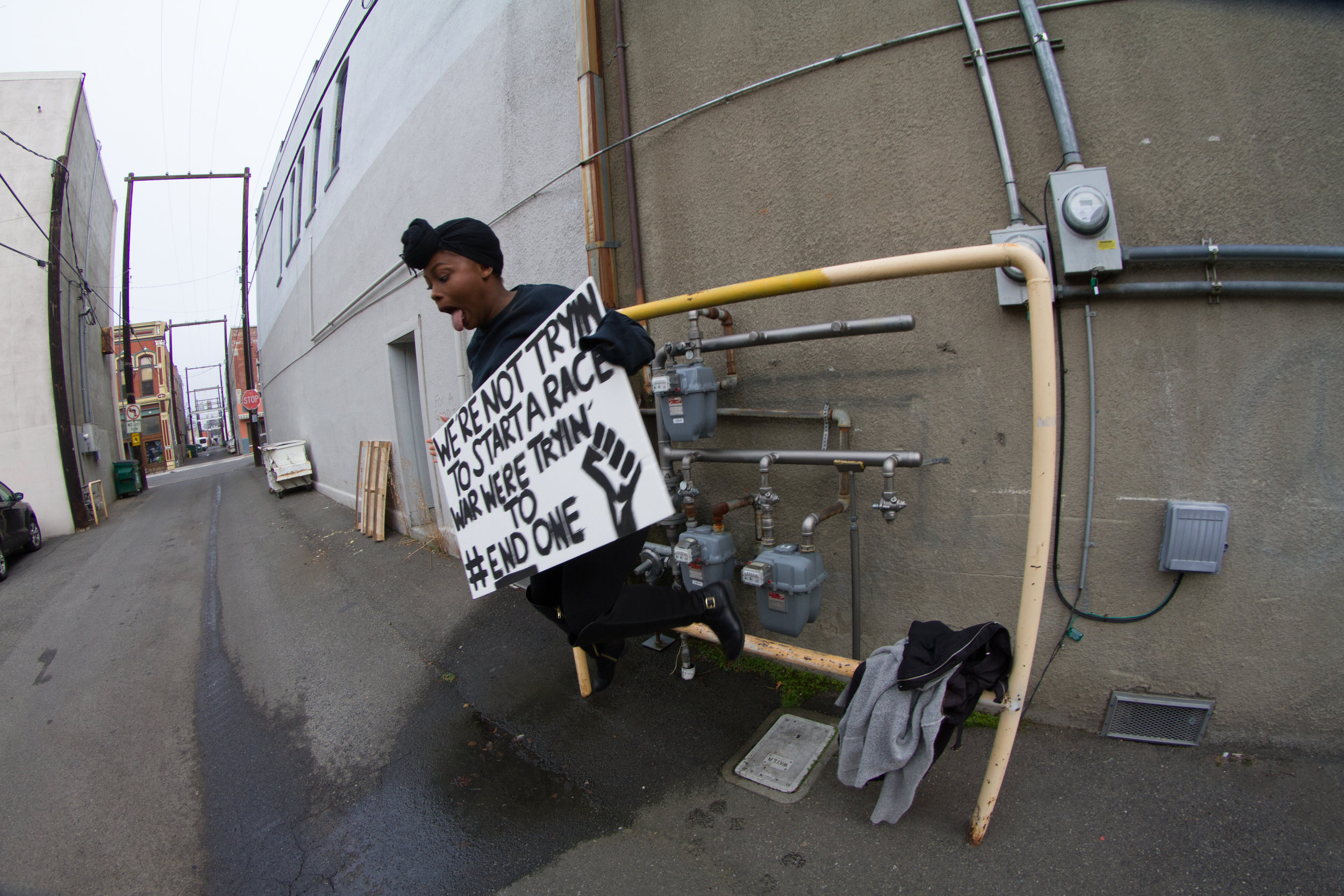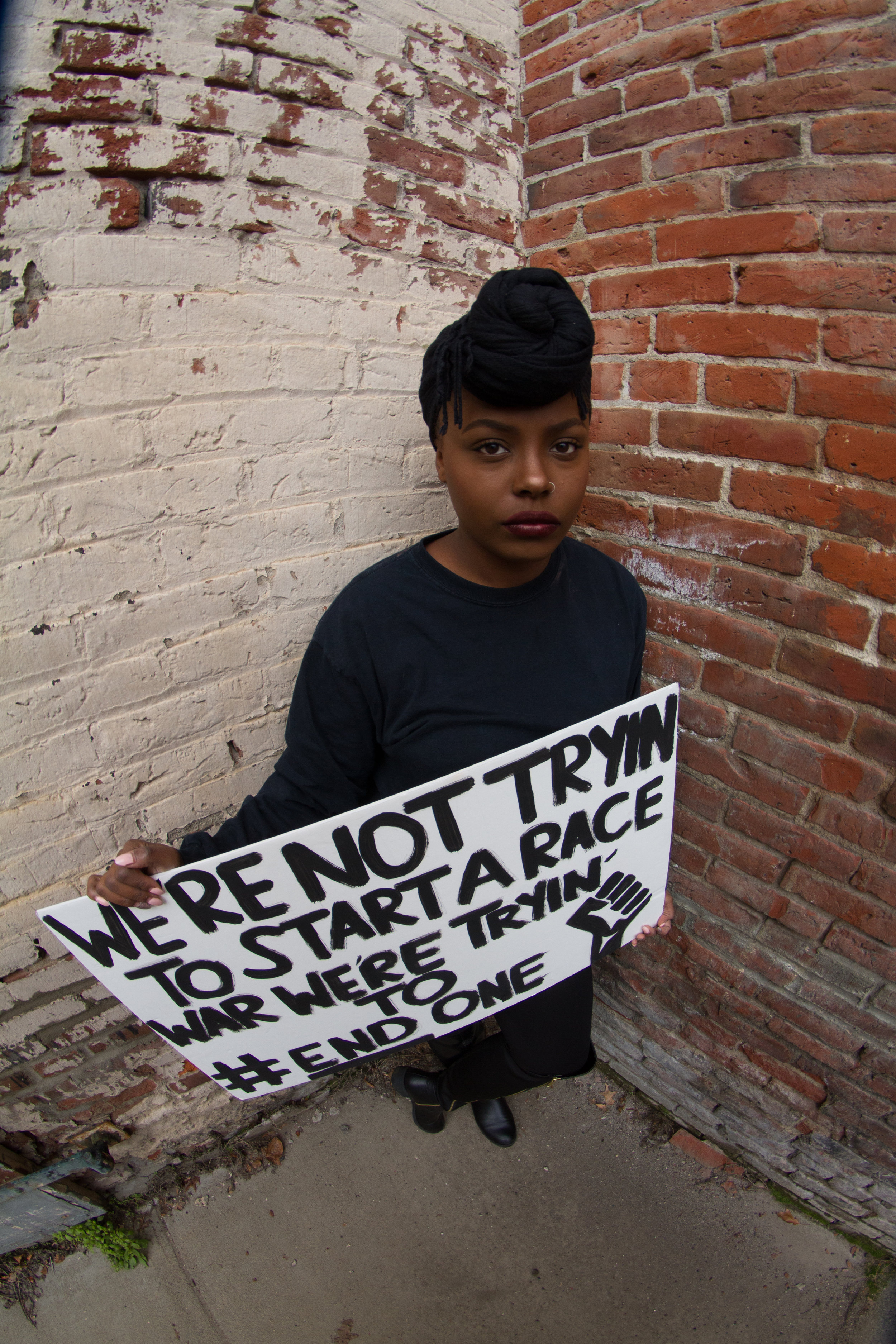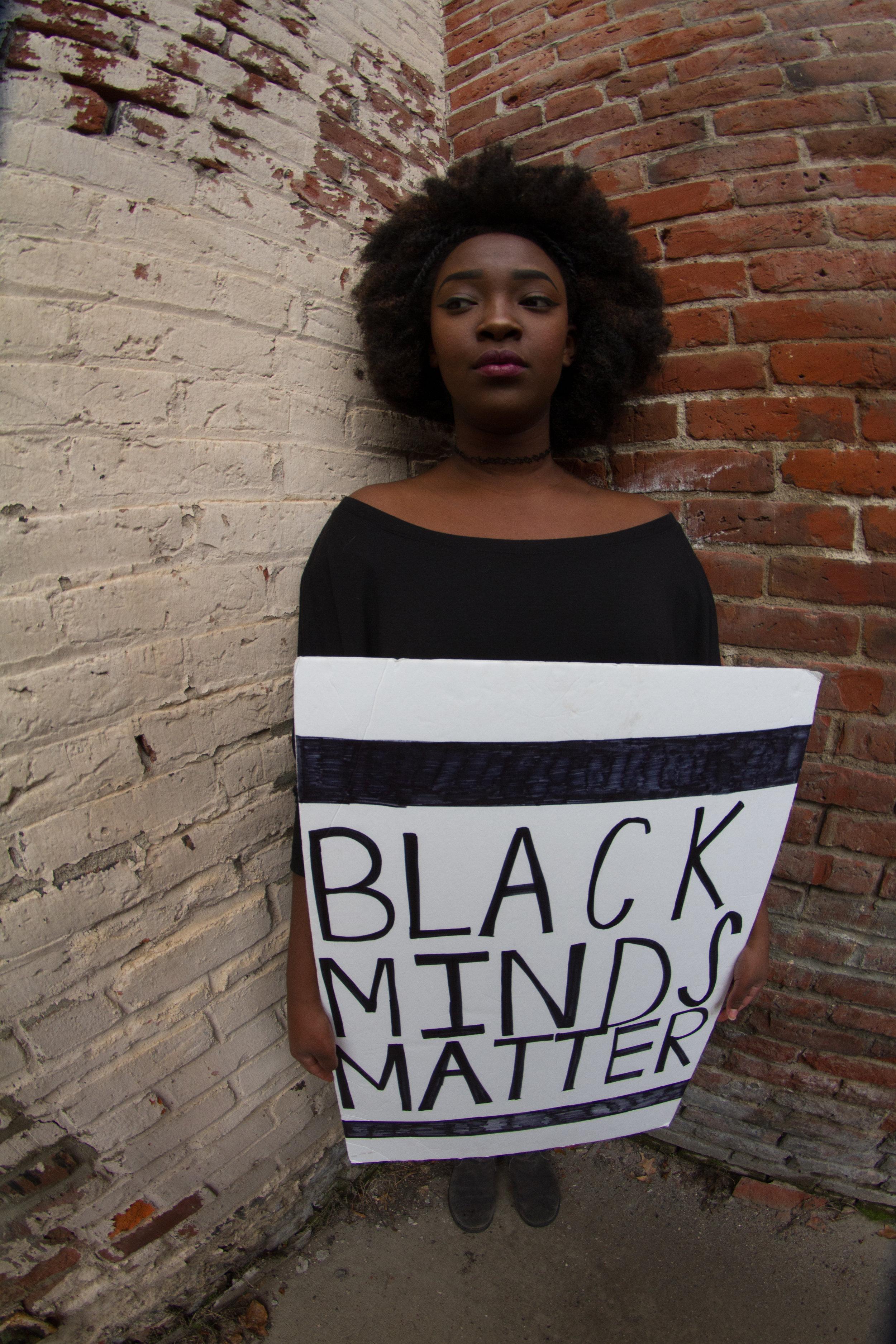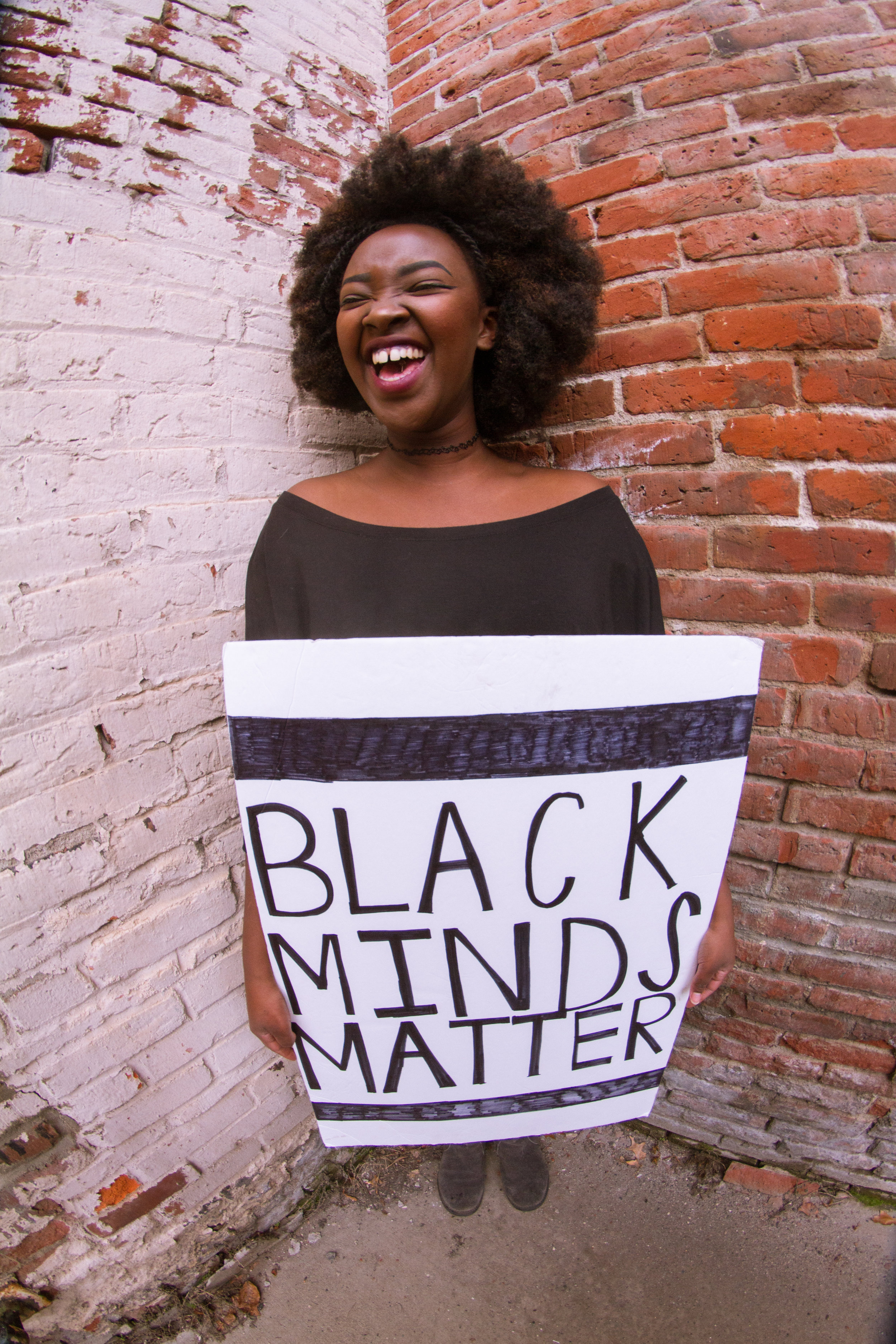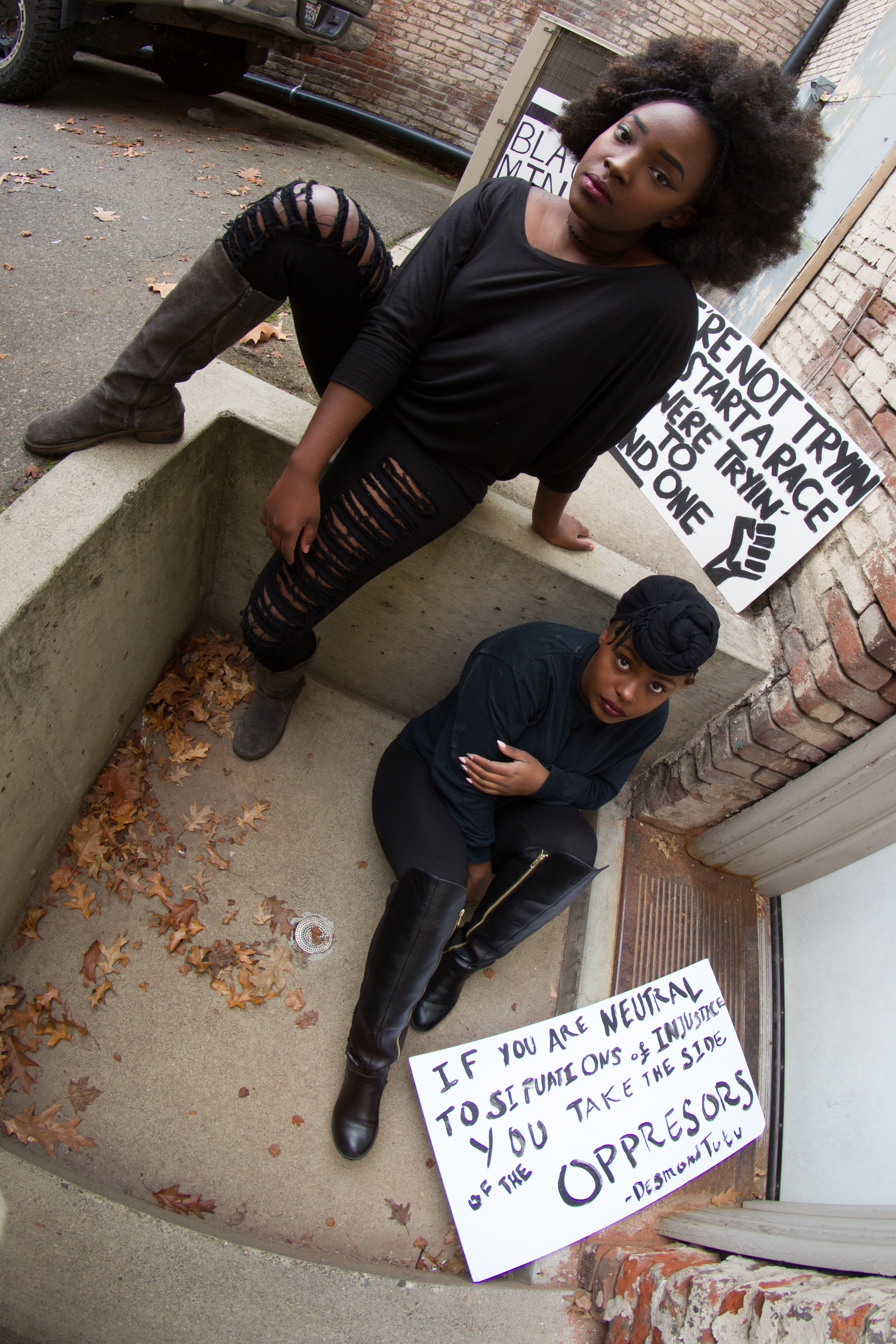Black Lives Matter
Why the Black Lives Matter Movement is Necessary
Racism still exists, and tensions are higher than ever
Story By: Bailey Williams // Photos By: Jack Lambert
Climate change isn’t the only thing raising the temperature across the nation. Tensions were immediately heightened when the results of the presidential election were announced in November.
Soon after, protests arose across America. Objecting to what is perceived as hateful rhetoric from new President Elect Trump, people are also taking proactive steps to educate their communities and those closest to them.
While some parents teach their kids about the birds and the bees, many black youth are taught a different story. One that prepares them for the harsh reality that this world wasn’t built with them in mind.
Robert Stephens, a 26-year-old black man, recalled the first time he got "The Talk" in an August 2014 article for Gawker, "What Black Parents Tell Their Sons About the Police.”
“It was the last day of school, and I was walking with my dad, preparing to leave. Suddenly, he paused, looked at me intently and said, ‘Son, you’re a black male, and that’s two strikes against you.’ To the general public, anything that I did would be perceived as malicious and deserving of severe punishment and I had to govern myself accordingly. I was 7 years old.”
It’s 2016, but racism still exists -- it never left.
ALL vs. BLACK
The term “Black Lives Matter” tends to rub people the wrong way. It is seen as an exclusion, which isn’t true.
“I think the biggest misconception that a lot of people have, is that the black community and allies are disenfranchising other people by saying black lives matter,” says Armando Ortiz, president of Central’s Associated Students. “We’re trying to gain exposure to the injustices that our justice system has. We’re trying to find equity and equality in all of these spaces.”
A common argument from the opposing side says that Black Lives Matter is anti-white which isn't the case, says Jaeana Davis, Junior Central Musical Theatre major.
"We are just trying to raise awareness to the genocide that is blackness, not only here in the U.S. but all around the world, black bodies are not respected or valued," she says.
When people respond with “All Lives Matter,” they’re right. All lives definitely do matter but that’s not the point, as Yvette Maganya, a Seattle BLM activist, says, it’s not about excluding but bringing attention to a group of people that have been ignored for decades.
“The movement isn’t saying that black lives matter more than anyone else’s,” Maganya says. “It’s saying that Black lives should matter, but the way our justice system, our media, and our police have been operating, suggests that black lives do not matter.”
In a July 2016 article for The Huffington Post, "Every Time You Say 'All Lives Matter' You Are Being an Accidental Racist," author Jesse Damiani wrote, “White America should be doing extra work to listen and understand.”
“When you say ‘All Lives Matter,’ you’re drawing attention away from a movement that would help push the country toward the version of itself where all lives actually do matter. In other words, when you say ‘All Lives Matter,’ you are perpetuating toxic racism and in fact causing harm. Because when you do, you’re making it harder for the rest of the country to bring about positive change.”
“You’re broadcasting to others that change isn’t necessary when it very much is," says Damiani.
How it All Started
Rewind time back to 2012. A young black man bought a pack of Skittles and an Arizona Tea from a local mini-mart. While walking home through a gated community, where he lived, he was killed.
The death of Trayvon Martin rocked the nation and gave birth to the Black Lives Matter movement.
“Rooted in the experiences of Black people in this country who actively resist our dehumanization, #BlackLivesMatter is a call to action and a response to the virulent anti-Black racism that permeates our society,” the BLM website states.
“Black Lives Matter affirms the lives of Black queer and trans folks, disabled folks, black-undocumented folks, folks with records, women and all Black lives along the gender spectrum,” it continues.
The goals of the organization go beyond police brutality and encompass many problems that plague the black community. “#BlackLivesMatter is working for a world where Black lives are no longer systematically and intentionally targeted for demise," according to the website.
BLM has inspired actions across the nation. Colin Kaepernick, a quarterback for the 49ers who made headlines earlier this season for kneeling during the national anthem, hosted an event in Oakland, Calif. on Oct. 29 for hundreds of black and Latino kids from the Bay Area.
Titled #KnowYourRightsOakland, the event was aimed at raising “awareness on higher education, self empowerment, and instruction to properly interact with law enforcement in various scenarios,” according to a press release.
And celebrities aren’t the only ones who are making an impact on their communities.
In October, around 2,000 teachers in the Seattle-area wore Black Lives Matter t-shirts to school to call for racial equity in education. According to organizers, who are members of a teachers’ union group, Social Equality Educators, the goal of the day was to affirm that “black lives matter in the public school.”
Education is where it all starts, according to ASCWU President Ortiz, who says, “we need more curriculum implemented to teach people their history and rights.”
“We need more educators of color. That’s the reason why I’m going into education because I want to show them I know what they’re going through,” says Ortiz.
Davis says that people need to educate themselves and call out the people in our lives.
"We have a lot of influence within our friend and family groups, so helping even just one person rethink racist ideologies, will help everyone in the long run," she says.
The conversations of racial equality are as old as our nation. Historically underrepresented groups have been displaced, segregated, exploited and murdered at the hands of a systematic system. The movement for Black lives isn’t new, but it’s one that is very necessary.
The Question of Black on Black Crime
The frequent placement of blame for criminal activity on the black community ignores the factors that contribute to it and fuels the fire of racism.
“Black people kill each other every day,” is a statement that floods social media feeds after reports of another unarmed black person being killed.
Ortiz responds to this. “Black on black and brown on brown crime does happen, they’re right. But if you look statistically, black people being killed by authoritative figures is way more than that.”
Although true, crime does happen in the black community, using this argument distracts from the point, says Wambui, senior Central Philosophy and Psychology major.
"It's a harmful rhetoric because it's justifying and disguising what the real problem is. We've grown up seeing our people being killed or treated terribly so we haven't learned how to love ourselves and our people. What does the world really expect?" Wambui asks.
Maganya agrees. “The myth of ‘black on black’ crime deflects from the fact that police brutality and crime within the black community both derive from structural inequality. Black people care just as much about crime in their own communities as they do about addressing a discriminatory criminal justice system that targets them. Blaming the crime problem on black people is unfair and ill-founded.”
She cites the FBI’s 2014 Uniform Crime Reports, which show that close to 90 percent of African- American homicides were committed by other African-Americans while 82 percent of White American homicide victims were killed by other white people.
Last November, Donald Trump got himself in hot water when he retweeted a chart with incorrect information along with an image that showed a dark-skinned, masked man with a gun and "statistics" about deaths in 2015 that read:
"Blacks killed by whites – 2 percent"
"Blacks killed by blacks -- 97 percent"
"Whites killed by whites – 16 percent"
"Whites killed by blacks – 81 percent"
According to the FBI Homicide Data Table, the correct numbers are pretty far off from what Trump listed:
"Blacks killed by whites—8 percent"
"Blacks killed by blacks—90 percent"
"Whites killed by whites—82 percent"
"Whites killed by blacks—15 percent"
Trump's picture was inaccurate and the biggest disparity was with the white homicide victims. The image shows blacks as the primary killers of whites, but according to the data that isn't true. There isn’t any scientific evidence supporting the claims black people are more violent or more likely to commit crimes than anyone else.
“The reality is that because of a history of institutionalized racism, black communities have higher poverty rates, suffer from poorly funded schools, and are more likely to be targeted by police,” Maganya says. “For the most part, black civilians who shoot and kill, and terrorize other black civilians are caught, arrested, prosecuted and sent to jail. They are punished for their crimes. Outside a few exceptions, the same cannot be said about cops who target black civilians.”
According to the National Association for the Advancement of Colored People (NAACP), Criminal Justice Fact Sheet, African Americans now constitute nearly one million of the total 2.3 million incarcerated population. African Americans are also incarcerated at nearly six times the rate of whites.
Maganya says there are many problems with, “the foolishness of attributing violent criminality to blackness rather than particular conditions fueled by some black people.”
She adds, “The fact that someone is ignorant enough to even bring up “black on black” crime as a rebuttal to us not asking to be unjustly murdered at the hands of the police tells me that that person is privileged enough to have never spent time in the communities that they’re speaking on. The term ‘white on white’ crime is essentially nonexistent, even though it does happen.”
Earlier this year, Jesse Williams, popular for his role on Grey's Anatomy and his civil rights activism, delivered a speech when he was awarded the Humanitarian Award from BET. In it, he called out the critics of the movement:
“If you have a critique for the resistance, for our resistance, then you better have an established record of critique of our oppression. If you have no interest in equal rights for black people then do not make suggestions to those who do,” he says.
Wambui agrees stating, "until people understand what we have gone through, they won't understand why we're doing what we are."
"There is always a hope that things can be better and stronger, but I think the biggest thing that I can say is to keep pushing. To show the world that we are no lesser than anyone else in the country and that we have become and will become something with or without them behind us," Wambui adds.
In the end, Maganya says, “Black Lives Matter isn’t just about the loss of life, which is terrible. It’s about the lack of consequences when black lives are taken at the hands of police.”
Forms of Racism
In an article titled “What is Institutional Racism,” Vernellia R. Randall, Professor Emeritus at University of Dayton School of Law, wrote:
"Racism is both overt and covert, and it takes three closely related forms: individual, institutional, and systemic."
Individual Racism
"Individual racism consists of overt acts by individuals that cause death, injury, destruction of property, or denial of services or opportunity."
Institutional Racism
"Institutional racism is more subtle but no less destructive. Institutional racism involves polices, practices, and procedures of institutions that have a disproportionately negative effect on racial minorities’ access to and quality of goods, services, and opportunities.
Systemic Racism
"Systemic racism is the basis of individual and institutional racism; it is the value system that is embedded in a society that supports and allows discrimination."

